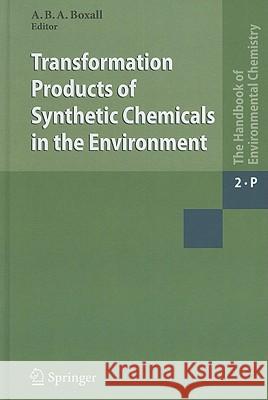Transformation Products of Synthetic Chemicals in the Environment » książka
Transformation Products of Synthetic Chemicals in the Environment
ISBN-13: 9783540882725 / Angielski / Twarda / 2009 / 249 str.
Transformation Products of Synthetic Chemicals in the Environment
ISBN-13: 9783540882725 / Angielski / Twarda / 2009 / 249 str.
(netto: 764,96 VAT: 5%)
Najniższa cena z 30 dni: 771,08
ok. 22 dni roboczych.
Darmowa dostawa!
Following release to the environment, synthetic chemicals may be degraded by biotic and abiotic processes. The degradation of the chemical can follow a plethora of pathways and a range of other substances can be formed via thesedifferentpathways(e.g. 1]).Anumberoftermshavebeenusedforthese substances including metabolites, degradates and transformation products - in this book we use the term transformation products. While we often know a lot about the environmental properties and effects of the parent synthetic chemical, we know much less about the transformationproducts. Transformationproductscanbehave very differently fromtheparent c- pound (e.g. 2]). For example, selected transformation products are much more persistent than their associated parent compound in soils, waters and sediments andsomemaybetransported aroundthelocal, regionalandglobal environmentstoadifferentextentthantheparentcompound.Transformation products can also have very different toxicities than the parent compound (e.g. 3]) and in some cases transformation products can be orders of mag- tude more toxic than their parent compound; although this situation is rare.The environmental risks of transformation products can therefore be very different than the risks of the parent compound. Thepotentialenvironmentalimpactsoftransformationproductsarerec- nised by many regulatory assessment schemes. For example, in the EU, pes- cideproducersarenotonlyrequiredtoassessthefateandeffectsoftheparent pesticide but are also required to assess the potential adverse effects of major metabolitesandminor metabolitesthat aredeemed tobeofconcern 4]. S- ilar requirements also exist for new human and veterinary pharmaceuticals and biocides (e.g. 5]). However, for many older substances and many other substance classes (e.g. industrial chemicals), data on the environmental risks of transformationproductscan be limited or non-existent











